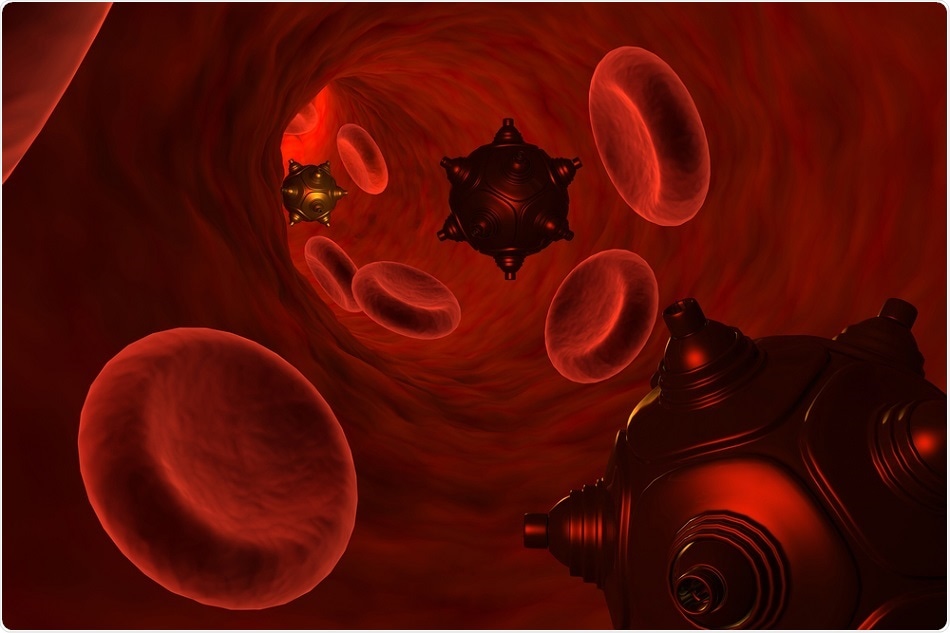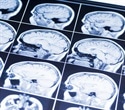The new revolution is almost here, and it runs on DNA nanomachines, which are extremely useful in biomedical research and in materials science. A new article recently published in the journal Science discusses how these tiny mechanical instruments are being created by “DNA origami” in different ways, to create, carry and sense mechanical force at the scale of picoNewtons or pN (10 pN being “roughly one-billionth the weight of a paper clip”).
 Evgeniy Mahnyov / Shutterstock
Evgeniy Mahnyov / Shutterstock
This area expands on the earlier field of micromachines, but focuses on machines many thousands of times smaller. Nanomachines have been a goal that many researchers have tried to reach. It looks as if “DNA mechanotechnology”, as the reviewers call it, could be the answer to building the most intricate designs at nanoscale, exploiting the self-assembly property of DNA.
Why DNA in nanomachines?
DNA is the genetic material in humans and many other species. It is a chain of four nitrogen-containing bases called adenine, guanine, cytosine and thymine, denoted by the letters A, G, C and T respectively.
These bases can pair in specific ways, namely, A with T, and C with G, to form the basis of a double chain – the famous double helix of DNA. While in nature both strands of the chain are formed from the same organism, scientists have long succeeded in synthesizing DNA. They have also been able to form hybrid DNA with one strand from a synthetic source and the other from a bacteriophage.
The DNA strands also build copies of themselves from each other during cell division for instance. They can do this because of the complementary base pairing, where one strand of DNA is the ‘mirror image’ of the other.
Shifting bases in the DNA strand thus leads to the bases pairing with complementary sequences in another part of the DNA molecule, which causes the molecule to change shape – as for instance, if the template sequence and the complementary sequence were not directly opposite each other, but one was a considerable way upstream or downstream of the other. Thus, the shape, stiffness and coiling of the DNA can all be modulated by shifting the base sequence.
This approach is called DNA origami. For instance, DNA origami was used to create a rigid probe handle to minimize thermal fluctuations caused by the flexibility of earlier polymer handles, and thus avoid artefactual noise. Yet, it remains capable of assembling another couple of strands complementary to the original pair.
The beginning
It was in the 1980s that DNA was first harnessed as a material out of which nanoscale devices could be made. This field was first conceptualized by Nadrian Seeman.
At first thought of as little more than a novelty, called DNA origami, because of the ability to make precisely detailed 3D subjects at submicroscopic scale, technologists delighted in creating charming little objects such as the world’s smallest tic-tac-toe set, or a minute map of the world.
However, this knowledge has been of great value in helping scientists to understand the mechanical characteristics of DNA, which underlies the progression of the field into nanomachines created out of DNA. This could help create machines that can push or pull biomolecules or other nanomaterials to achieve specific tasks in biology, biomedicine, and even materials science.
All mechanical devices do one of three things: they create forces; they transmit force; or they sense force. DNA strands can be used to create individual strands of DNA in the tens of thousands, which require to be mixed to immediately proceed to build themselves up into complicated 3D devices, precise to within a nanometer.
The properties of DNA enable the rapid and predictable self-building of nanomachines that can do a whole range of useful tasks, powered by chemical energy: a nanocapsule that opens only when it reaches a particular site location; a nanocomputer; or a nanorobot that can act as a miniature assembly line worker.
Further, DNA self-assembly and the ability to readily modify it as required, used in genomics research, has made it possible to avail of quick and relatively inexpensive methods to synthesize DNA, thus driving this field ahead rapidly.
If you put together these three main components, you begin to get hammers and cogs and wheels and you can start building nano machines. DNA mechanotechnology expands the opportunities for research involving biomedicine and materials science. It's like discovering a new continent."
Researcher Khalid Salaita
Khalid Salaita is confident that the world of nanomachines is only just beginning, with anything that can be dreamed up becoming a possibility. He instances the creation of a custom pair of nanoscissors from DNA.
Once the basic design is known and a computer-aided design is drawn, it can be given to a manufacturing source for synthesis. The order is delivered as a mix of elements which have to be put into solution and allowed to assemble themselves into the right shape. The final step is verifying the functionality of the proposed scissors under a microscope.
DNA force sensors
Salaita should know – he and colleague Blanchard just developed the sturdiest synthetic DNA motor. However, there are about 100 laboratories pushing the boundaries of DNA-based machines.
But Salaita confesses he is more curious to find out how cells actually push or pull other objects inside and outside cell boundaries, using molecules like myosin (the cell motor), actin (the skeleton of each cell) and anchoring integrin proteins which resist cell shear and keep them in their location. Such discoveries are related to actual mechanical forces that act in human immunity.
He has come up with an original DNA force gauge that can show the degree of mechanical (as opposed to chemical) intermolecular force applied over the whole surface of a living cell.
Abstruse as this looks, it may one day be extremely useful as, for example, helping to define what types of force or cell movement are normal and which are abnormal. An area in point: is the abnormal movement of cancer cells a cause or effect of the disease we call cancer?
In 2016, the DNA force gauges provided pioneering evidence that T cells employ mechanical force, like guards outside a high-security office. These highly specialized immune cells occur in each person in millions of ‘flavors’, each designed to detect only one type of foreign cell or microbe.
T cells are always passing through the body, sampling surface proteins called antigens on other cells. When they ‘shake hands’ with these antigens, and then tug away, the force of the pull tells the T cell if it has found a true antigen – signaling a foreign cell or particle of the type it is built to detect – or not.
If the bond breaks with less than threshold force, the T cell concludes that it is a nonspecific bond and not a threat. The stronger and the longer the tug lasts, the surer it is of being a true match, or something extremely closely matched to it.
These sensors also helped validate the “mechanical proofreading” theory which holds that cells can transfer information via surface receptors using mechanical force sensors. Thus when a B cell receptor feels 12-20 pN of force, the antigen to which it is bound is recognized and brought into the cell to stimulate antibody production.
These DNA force gauges have now been fine-tuned, as presented in another paper recently published in the PNAS, allowing them to pick up mechanical forces as slight as a billionth of the weight of a paperclip but also as transient as a blink. This will give incredibly detailed pictures of immune interactions via mechanical forces. It could also tell how robust the immune response mounted by the T cell will be.
We hope this tool may eventually be used to fine tune immunotherapies for individual cancer patients. It could potentially help engineer T cells to go after particular cancer cells.”
Khalid Salaita























 Discovery of DNA repair mechanism advances understanding of how human cells stay healthy
Discovery of DNA repair mechanism advances understanding of how human cells stay healthy